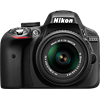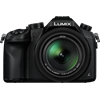Main
Model
Price
Advantages
launch
Announced
Body type
Camera subcategory
Sensor
Effective pixels
Max resolution
Sensor size
Sensor type
Processor
Image ratio w:h
Other resolutions
Sensor photo detectors
Image
ISO
Boosted ISO (maximum)
White balance presets
Custom white balance
Image stabilization
Uncompressed format
JPEG quality levels
Boosted ISO (minimum)
Image stabilization notes
Photography features
Minimum shutter speed
Maximum shutter speed
Aperture priority
Shutter priority
Manual exposure mode
Subject / scene modes
Built-in flash
Flash range
External flash
Flash modes
Continuous drive
Self-timer
Metering modes
Exposure compensation
WB Bracketing
Maximum shutter speed (electronic)
AE Bracketing
Screen / viewfinder
Articulated LCD
Screen size
Screen dots
Touch screen
Screen type
Live view
Viewfinder type
Viewfinder coverage
Viewfinder magnification
Viewfinder resolution
Videography features
Resolutions
File Format
Microphone
Speaker
Videography notes
Optics & Focus
Autofocus
Digital zoom
Manual focus
Number of focus points
Lens mount
Focal length multiplier
Focal length (equiv.)
Optical zoom
Maximum aperture
Normal focus range
Macro focus range
Physical
Weight (inc. batteries)
Dimensions
Environmentally sealed
Battery
Battery details
Battery Life (CIPA)
Storage
Storage types
Storage included
Connectivity
USB
HDMI
Wireless
Wireless notes
Remote control
Microphone port
Headphone port
Other features
Orientation sensor
Timelapse recording
GPS
GPS notes
Samples
Videos
Summary
The D3300 highest resolution of 6000 x 4000 pixels (24 megapixels) is better in comparison with the Lumix DMC-FZ1000 highest resolution of 5472 x 3648 pixels (20 megapixels). The D3300 is produced with bigger sensor than the Lumix DMC-FZ1000: APS-C (23.5 x 15.6 mm) versus 1″ (13.2 x 8.8 mm). It is the most significant advantage of this model because large sensor lets you to shoot pictures of the better quality. The D3300 has a wider ISO range of 100-25600 than 125-12800 ISO range of the Lumix DMC-FZ1000. Such ISO numbers let the camera owner to shoot good quality pictures in low light situations. The D3300 provides more presets of white balance - 12. This specification gives you more control over colour. The Lumix DMC-FZ1000 offers more powerful 4x digital zoom. The Lumix DMC-FZ1000 offers more number of focus points than the D3300: 49 vs 11. More number of focus points means less risk of losing focus lock while following a moving object.
The Lumix DMC-FZ1000 is produced with swiveling LCD which will let you to shoot photos from any odd angle. The Lumix DMC-FZ1000 has better slowest (60 seconds) and maximum (1/4000 second) shutter speeds.
The D3300 supports external flash. It provides superior control over the exposure and lighting of the subject in dim light and in bright light situations where the camera owner needs to fill-flash. The Lumix DMC-FZ1000 is produced with built-in Wi-Fi which will help the camera owner to transfer pictures quick and easy. The D3300 battery life is better than the Lumix DMC-FZ1000 battery life. According to CIPA standards the camera owner will be able to produce 700 shots with the D3300 and only 360 with the Lumix DMC-FZ1000. The D3300 weighs 430g that is 401g lighter in comparison with the weight of the Lumix DMC-FZ1000. The D3300 can utilize optional accessory GPS devices. This feature can be convenient if the camera owner is a traveller, to be able to go into the picture metadata and see exactly where a picture was shot.
The Nikon D3300 has 11 advantages and the Lumix DMC-FZ1000 only 10 so the D3300 becomes the best choice. Get the list of the best offers on Amazon.


